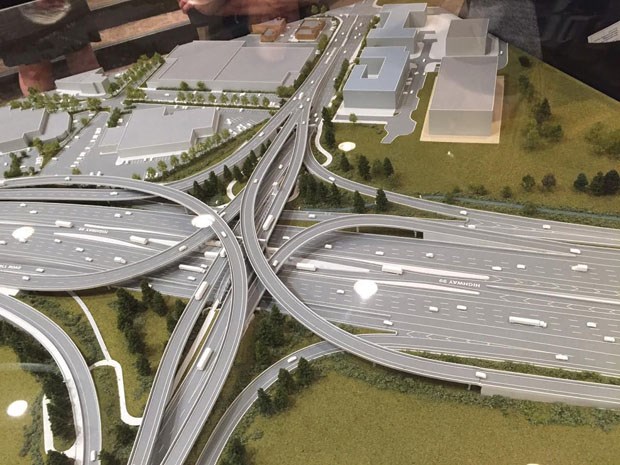Richmond is about to become Los Angeles if the vanity bridge is built. The three-level interchange proposed by the provincial government will tower over the highway and dwarf the apartments and businesses nearby.
With no improvements planned for local roads, including the intersection of Steveston Highway and No. 5 Road, the traffic could be stopped on the elevated off-ramp waiting for the traffic light and emitting toxic exhaust in front of the residential and commercial area.
It is time for the province to work with the Metro Vancouver Mayors' Council and accept that the mayors' transportation plan for an integrated system is better than the George Massey Tunnel Replacement Project.
In the past, two different plans were announced, one by former transportation minister Kevin Falcon and the other by former premier Bill Vander Zalm, both of which allowed for twinning of the tunnel and more buses, and the price tag was far lower than the $3.5 billion for this proposed project.
NDP Leader John Horgan was quoted on CKNW recently as saying, "I think the Massey replacement is a Premier (Christy) Clark project, it is a vanity project that she put on the table, it is not a priority for the region, it is not a priority for the local mayors... The region wants their regional projects to go forward."
So now it's official, the vanity bridge is an election issue and it will be watched by the entire province. Smaller communities across B.C. will learn that the proposed bridge would be the longest cable bridge in North America and it is not a priority for Metro Vancouver and that cheaper, more efficient transportation solutions are available that are supported by the mayors' council.
Other communities across B.C. should ask themselves what interchange or highway improvement they're not going to get when $3.5 billion goes towards a new bridge. Who cares if we move the traffic from south of the George Massey Tunnel to south of the Oak Street Bridge? We need a regional plan that connects the dots and the mayors' council has already developed that plan.
Location of the bridge tower on the north edge of the Fraser River is concerning because it is the only place in Richmond at extreme risk of liquefaction in the event of an earthquake. According to the information supplied by the provincial government, the Red Zone encircles the tower and it seems illogical to build such a structure on unstable ground.
The tunnel is on a bed of sand and is able to move as needed if an earthquake should occur and gates will come down at the entrance of the tunnel if the sensors detect an earthquake. What would happen to people and cars already on the 10-lane bridge if there was a significant earthquake? The $3.5 billion price tag for the bridge is really a tax but it will likely be considerably higher when you calculate the additional potential costs. For example, the Port Mann Bridge lost $82.5 million last year and $89 million the year before, while next year a $102 million loss is projected and $106 million the year after that. This could add up to $5 billion over 50 years.
The bridge tolls are a form of tax and if the toll for the bridge to replace the tunnel is $7.30 each way, as has been projected, and 115,000 vehicles travel over the bridge over a 50-year period as projected, we could be talking a $15.3 billion tax. So at this point it is reasonable to conclude the mayors' plan is a bargain and rapid transit along with the support network are the only practical way to go.
My hope is that common sense will be applied and a better working relationship will develop between our MLAs and the City of Richmond so our concerns can be heard in Victoria. I also hope the mayors' council will be heard by the province loud and clear and its good advice, research and plans will be accepted as the future for the transportation needs of the region. In the meantime, I will do my best to educate fellow councillors from across B.C. to the dilemma we find ourselves in when I attend the UBCM conference Sept. 25 to 30.
If the province does not commit to better cooperation very soon with the mayors' council, I suspect next May's election results will be quite different.
Carol Day is a councillor with the City of Richmond.



